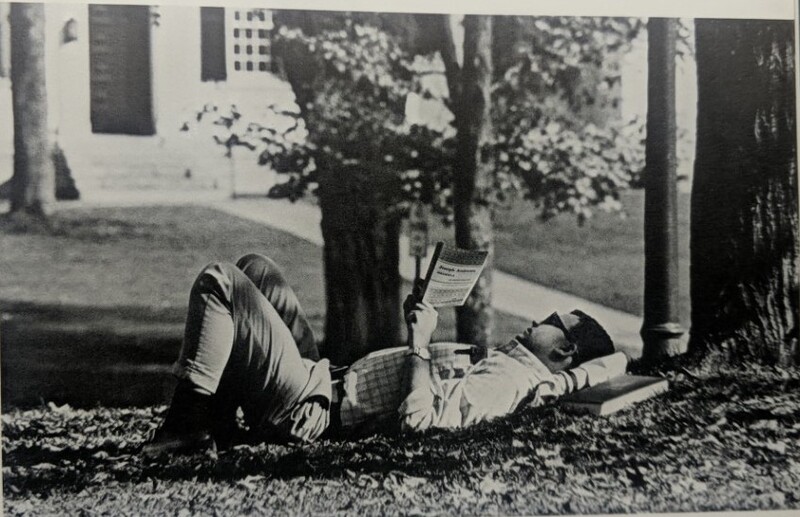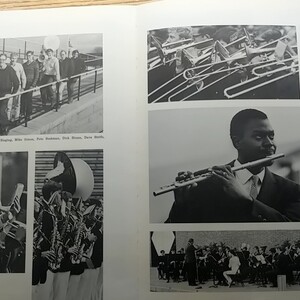We Are Not A Monolith
We Are Not A Monolith
While older Black students worked together to ensure that younger Black students felt welcomed supported, it was important to Dr. Copeland to emphasize the uniqueness of each of them. The Black students, though a unit in some ways, were different in others: the ways they were raised, where they grew up, how they spoke, and, consequently, how they believed oppression should be fought.
While Dr. Copeland had grown up in a majority white neighborhood that gradually transformed into a predominantly Black neighborhood, other students were not as used to being around such a large white population. Some of these individuals were from the Chicago Vice Lords who came to Dartmouth as part of the Foundation Years Program. The program was put together by the college in 1967 in an effort to diversify the school not only racially, but intellectually.
Elite Ivy League institutions were, and often are, known for their “booksmart” students that also tend to be well-rounded. Before the ‘60’s it was thought that these "booksmart" individuals could only be white, well-off men. However, as Dartmouth began to integrate racially, DeWitt Beall '62, a filmmaker, thought it was time for Dartmouth to start expanding in a new way. He want Dartmouth to give Black students who would usually be seen as unqualified for a place like Dartmouth the opportunity to learn with the elite. This opportunity was called the Foundation Years Program.
These new students from the Vice Lords were incredibly street smart and had the skills to succeed at a place like Dartmouth, according to Beal, but they would likely never be given the opportunity except in an experimental program, such as the Foundation Years.
Dr. Coplenad attended college at the same time as some of the former Vice Lords and recalled,
“The fact that those individuals were also older, they were really young adults, if you will, and so they had a lot more impact and were seen, not only as peers and colleagues, but also as mentors.”
Dr. Ronald Copeland
While not all the students in the Foundation Years ended up graduating, their presence impacted many Black Dartmouth students as these individuals helped to show them new perspectives when it came to being Black and protesting.
Another group of students came to campus in a completely different way. Black students were also recruited from schools well-known for having high achieving Black students, such as Exeter, Phillips Academy at Andover, and Choate. With the help of the National Scholarship and Service Fund For Negro Students (NSSFNS), Dartmouth was able to cast its net for Black talent beyond the northeast.
This contributed to the wide array of Black students Dartmouth was privileged to have on its campus. No matter how little or big their contribution to the fight for Black liberation was, their presence was felt by the generations that came after them.
This can be seen even before Dr. Copeland made his contributions. The Vice Lords, for example, impacted his journey as many of them had already had the experience of being at Dartmouth as true outsiders given not only their race, but background. This can also be seen in the students who protested before Dr. Copeland was on campus. Students, for example, who retaliated against Dr. William Shockley, a scientist convinced that Black people were inherently inferior, by applauding him out of a lecture hall.
In Upending the Ivory Tower: Civil Rights, Black Power, and the Ivy League author, Stefan Bradley writes that students' fight for Black freedom at Dartmouth was different from other ivy institutions. According to Copeland, there were many debates among Black students on the best ways to have their voices heard.
As Dr. Bradley discusses, Black students at Dartmouth also wondered: Would they be like Cornell and parade around campus with rifles? Would they be like Columbia and attempt to take their Dean hostage? Would they be like Brown and just walk off campus? What they decided was no, they would not. They would work with the administration to bring about change. Some may ask why they took such a conservative route. Dr. Copeland explains it:
“I think when you look at the differences and how quote unquote, radical tactics people may have used to try to drive points or make social, political statements— I think in part, it was a matter of what you propose and how receptive or not the administration was to those things.”
Dr. Ronald Copeland
NOTE: To view full document, click on image. The document should open in a new tab.









